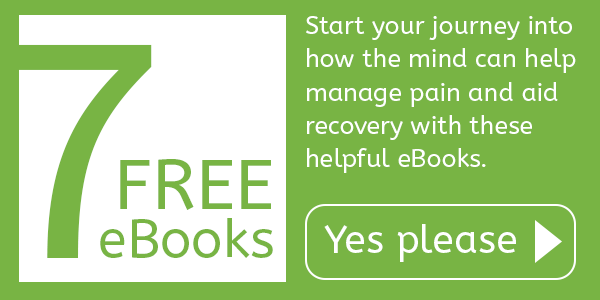In an earlier article, “How Mindfulness Can Help with Physical Suffering,” I noted that bodily discomfort has three aspects to it: (1) the unpleasant physical sensation itself; (2) our emotional reaction to the discomfort, such as anger or fear; and (3) the thoughts that are triggered by the discomfort, such as, “This pain will never go away” or “I’m a weak person because I hate this pain so much.” In that piece, I discussed (2) and (3) which—together—are often called mental suffering.
Here, I want to focus on (1) above—the actual physical sensation of pain, although the techniques I’ll describe can help with any physical discomfort (I know because I also use them for my chronic flu-like symptoms).
Before I explain these techniques, I want to make it clear that I don’t have a negative view of pain medication. I think it’s misguided that so many people regard the taking of pain medication as a sign of weakness. We’re told “no pain…no gain” or “push through the pain.” I suspect that people who offer this type of advice have never suffered from chronic pain. Everyone has to find what’s right for his or her body. For some of you, it may be a combination of pain medication and these techniques.
Preliminaries
It always helps to begin with conscious breathing in which you pay attention to the physical sensation of the breath as it goes in and out of your body. Find a comfortable position—sitting or lying down—and begin to breathe mindfully. Do a quick scan of your body from head to toe. If you feel any muscles that are tight, try to relax them. After a few minutes of this breathing, try these five techniques to see if they help relieve your physical pain. I recommend experimenting with each of them to see which ones work for you. Some of the techniques are adapted from what is called MBSR: Mindfulness-Based Stress Reduction. I like to call it Mindfulness-Based Pain Reduction.
The Techniques
1. Focus on the sensations that make up the pain. Is there burning? Is there throbbing? Is there tingling? Heat? Cold? Are there waves of sensations where the pain gets more intense and then less intense? This separating out of the sensations is called “sensory splitting.” It helps you see that what you’ve been thinking of as a permanent solid block of pain is really many different constantly changing sensations.
When you separate the sensations in this manner, pain is no longer “a thing,” and so you’re much less likely to be carried away by stress-filled thoughts about it, such as, “This pain will never go away.” You can even drop the word “pain,” and just notice the sensations as arising and passing experiences in your body. Doing this helps you see the impermanent nature of this collection of sensations that we call “pain.”
Finally, bring an attitude of kindness toward the sensations, even though they may be unpleasant. Your body isn’t purposefully making you suffer. Treat it as you’d treat a child in pain.
2. Switch your attention to a part of your body that is pain-free. At first, you might think there isn’t such a place, but with persistence, you can find it. It could be your toes, your face, your chest. Relax into that pain-free sensation, allowing it to become the predominate sensation if you can, even if for just a few moments. This allows you to see that you are not just pain since there’s at least one place on your body that is pain-free.
You can take this technique a step further and engage a pain-free area in some movement. I’ll reveal a secret because at least you won’t see me in action. I sometimes lie on my back in bed and move my hands in balletic movements. I love to watch my hands and fingers imitate the grace of a ballerina.
3. Look for other pleasant or interesting sense data in the present moment. Find as many as you can—the sight and feel of the sun shining through the window, the sound of cars passing by, a fleeting thought about what you’ll eat for dinner, the hum of the refrigerator motor, the physical sensation of a wisp of hair on your cheek, an odor coming from the kitchen. Paying attention to as many sensory inputs as you can often eases your pain because it relegates it to just one of many sensory experiences going on in your life at the present moment.
4. Try imagery. Think about a place…
Read the full article on Psychology Today
Further Reading






